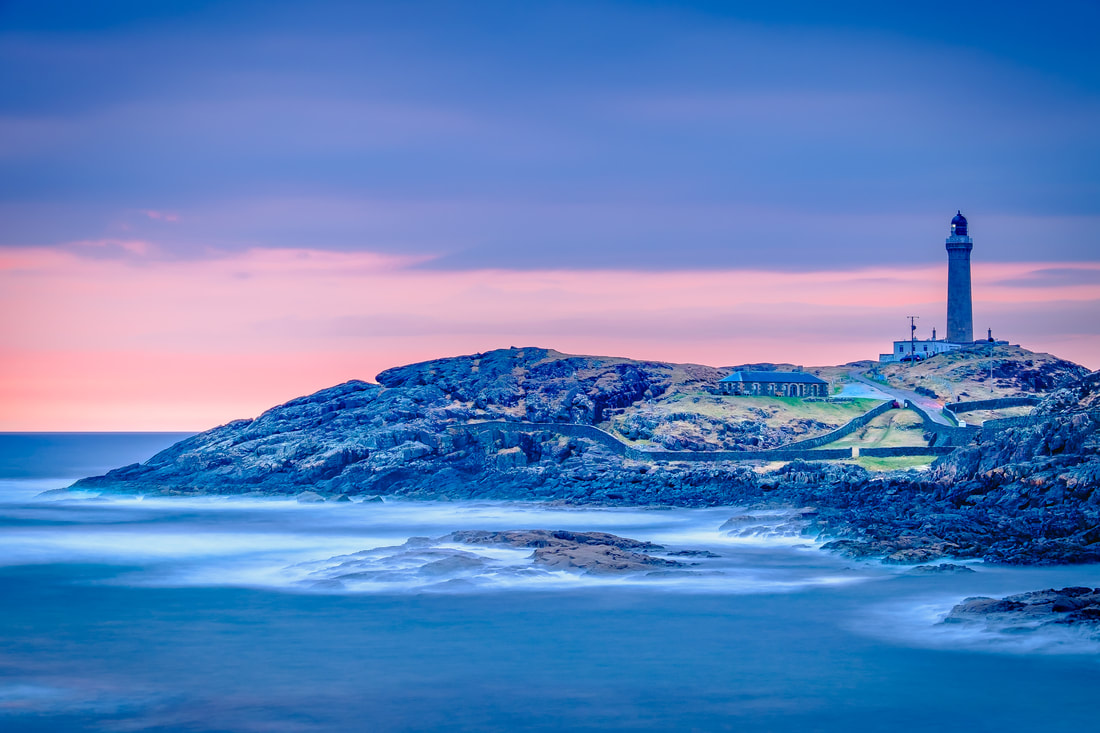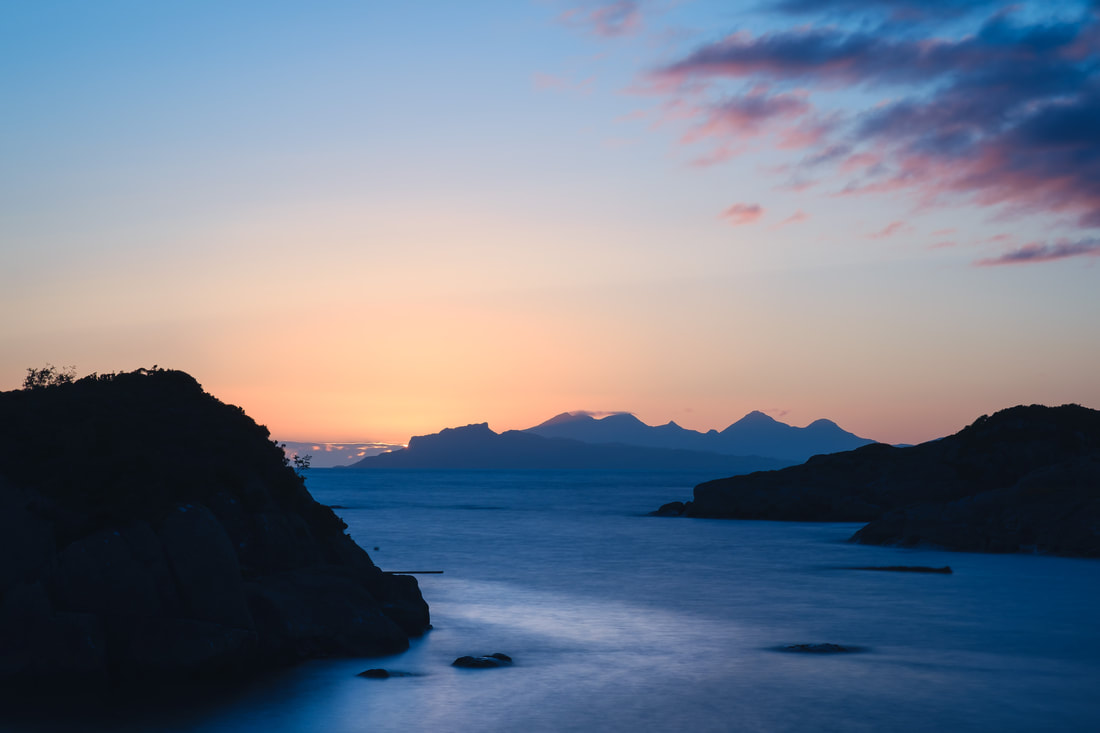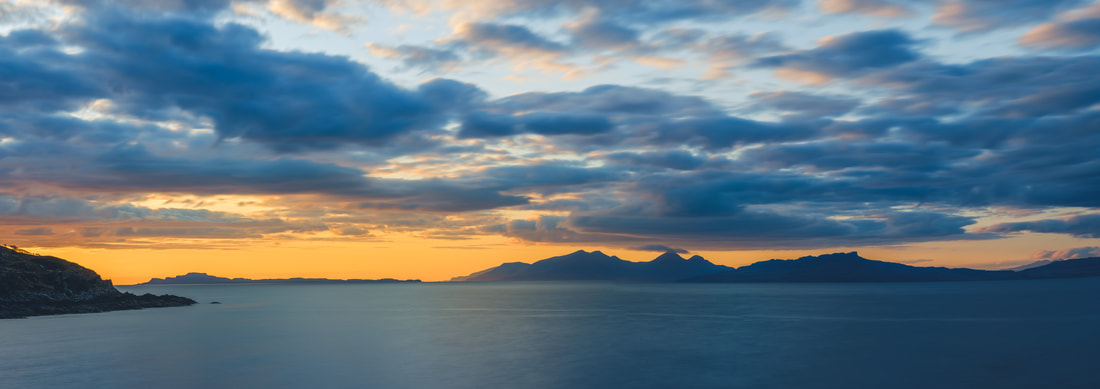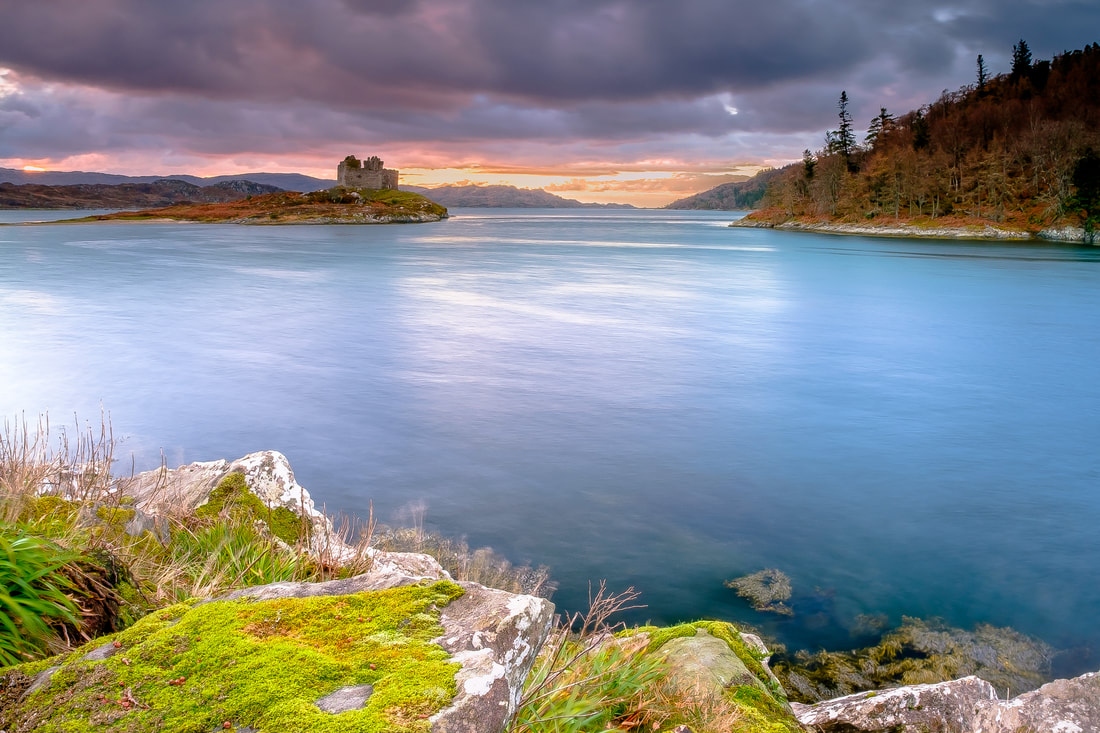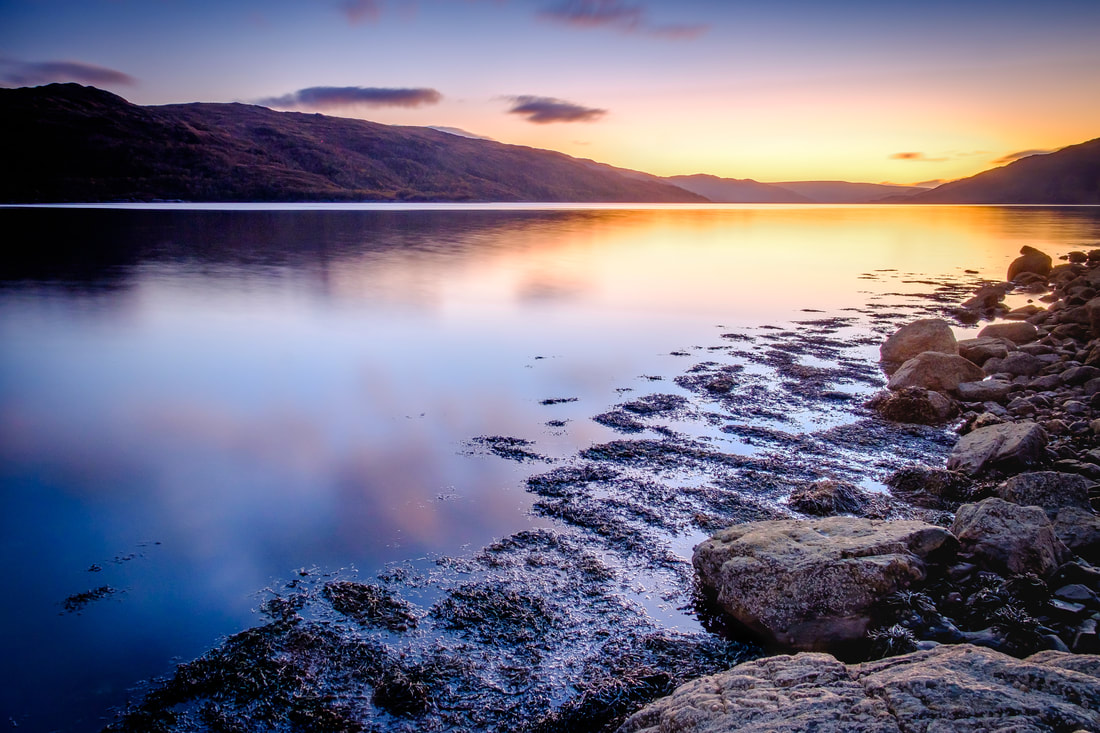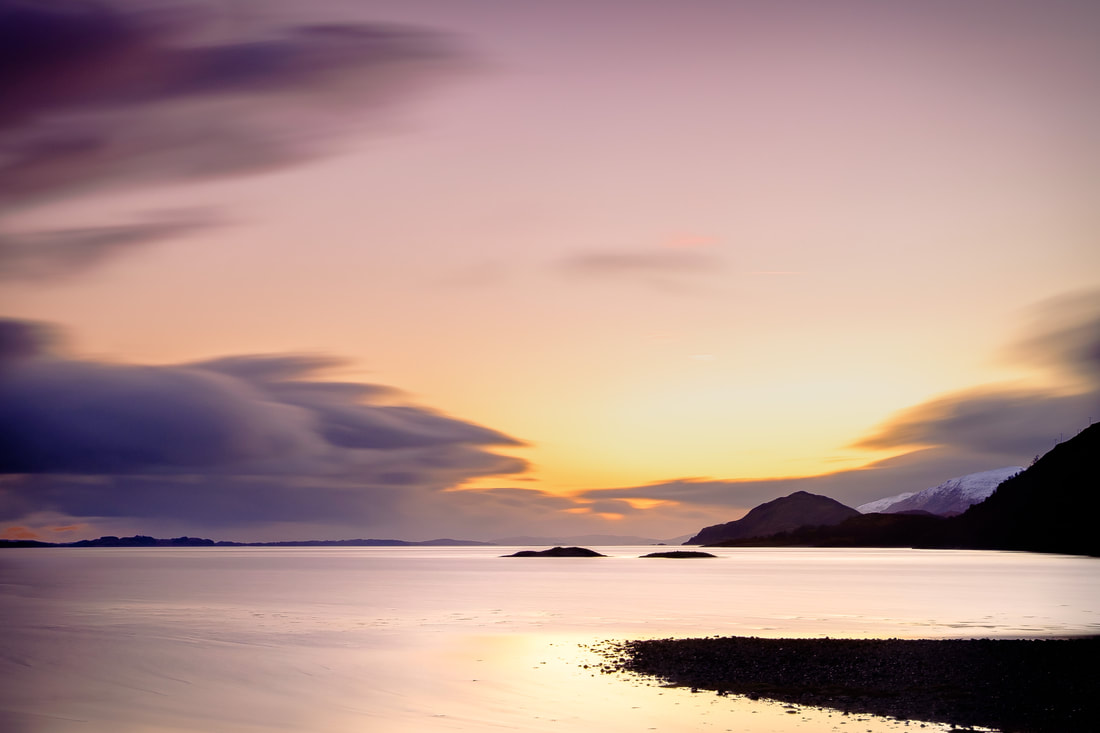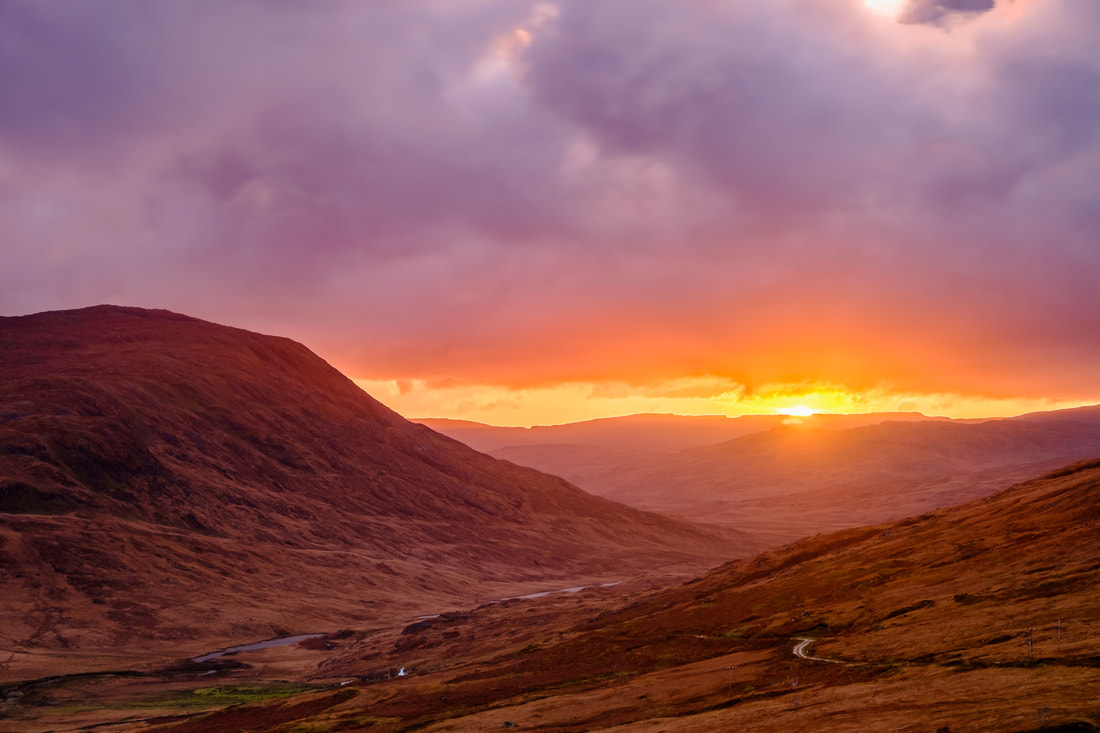|
I been looking through my library of images in recent weeks, looking for common themes that might form the basis of a couple of projects for the next 12 months or so and noticed that there were a few photographs that were taken during what is called the “Blue Hour”, an incredibly photogenic time of the day when the landscape is infused with rich, blue tones. One of these images is below and it shows Ardnamurchan Lighthouse on its rocky promontory with the sea, the land and the sky all tinged with these rich, blue tones. So what exactly is the blue hour? The blue hour occurs twice a day, just before sunrise and just after sunset, so you might be thinking that it is simply the time of day known as twilight, but there is a little more to it than that. This first thing to know is that there are three phases of twilight: civil twilight, when the Sun is between 0° and -6° below the horizon; nautical twilight, when it is between -6° and -12° below; and astronomical twilight, when it is between -12° and -18°below. During civil twilight, there is still colour in the sky, and it is light enough to see objects clearly; the sky is darker during nautical twilight and by astronomical twilight it's almost completely dark. The evening blue hour is the period of transition from civil to nautical twilight (or vice versa in the morning), when the Sun is between -4° and -8° below the horizon. At this time, the longer red wavelengths of light from the Sun pass straight out into space and the shorter, blue wavelengths are scattered in the atmosphere. The result is a rich and saturated cool blue colour that is incredibly atmospheric, so if romance and mystery are your thing, this really is a great time head out with your camera. Before you do though, you should know that despite its name, the blue hour only lasts for 20-40 minutes depending on your location, the time of year and atmospheric conditions. At this time of year here on the Peninsula, it begins at about 20 minutes after sunset and at 45 minutes before sunrise. In either case it lasts for around 20 minutes, so the opportunity for photography is fleeting, but nonetheless very rewarding. Beyond its aesthetic appeal, I find the blue hour to be an incredibly tranquil and thought-provoking time of day, and this is especially true of the evening blue hour. I’m not sure what it is, but this “in-between time” during which day transitions into night, I feel compelled to pause and appreciate the beauty of that exact moment. This is especially true if I’m out in the landscape alone with my camera because moments of such solitude bring a real sense of peace and stillness that allow me to disconnect from any stresses or challenges that I may have experienced during the day.
As the blue hour comes to an end, the sky transforms from the canvas of rich blues that I was photographing to a deepening shade of indigo. With this comes the gradual unveiling of the stars, with each one sparkling ever brighter as the sky darkens. As more and more stars become visible, I am often struck by the vastness of the cosmos and with this comes strong feelings of awe and humility due to Earth’s true insignificance. The sheer scale of the Universe, with its billions of galaxies each containing billions of stars, puts into perspective the minuscule size and fleeting existence of our home planet. It is a mere speck of dust in the cosmic ocean and seems so inconsequential in comparison to the unimaginable expanses of space stretching out in all directions. It is in these moments that I am reminded of the transient nature of human existence. Yet, amidst this feeling of smallness, there is also a sense of wonder and curiosity. The very fact that we can contemplate our place in the Universe, that we can marvel at the stars and ponder the mysteries of existence, is a testament to the extraordinary capabilities of the human mind. It is in moments like this that I just love catching the blues.
6 Comments
As we move away from the Autumn Equinox and towards the Winter Solstice it seems to me that, along with the days getting shorter and colder, the evening skies are getting brighter and bolder. We often get brooding skies, with the oranges, pinks and reds from the setting sun breaking up the greys, blues and purples of clearing storm clouds to produce dramatic scenes such as one I witnessed at Castle Tioram on a late-November afternoon and shown the image below. This makes me beg the question: Are late autumn and winter sunsets better than those we get at other times of the year? Well, it turns out that scientific studies have confirmed this to be the case and they have discovered the reasons why Scientific researchers have found that the peak sunset season is from November through to February and that this is down to a combination three things. These are the type and quantity of the cloud cover, cooler air temperatures and how the Earth is tilted towards the sun at this time of the year. Contrary to what you might think, we need clouds for a good sunset and they have to be the right kind of clouds. If they are too low down on the horizon, they will block out the Sun’s rays and prevent a sunset. Instead, we need mid to high level clouds that will refract the sunlight and give us those beautiful sunset colours. This happens more in autumn and winter because the weather patterns we get then tend to bring mid and high-level altocumulus, altostratus and cirrus clouds. The cooler temperatures mean that the air is less humid and that there is less water vapour to capture dust particles that are in the air and create the haze which is often a feature of the summer months. When present, this haze scatters sunlight and reduces its intensity. So, in autumn and winter, the lower humidity means that the air is clearer and we see the colours produced by the setting sun in all their intensity. Finally, as we approach the winter solstice, the North Pole gets tilted further away from the sun, lengthening the time taken for the sun to set. This, in turn, means that the sunset colours last longer than at the equinoxes, for example, when the sun sinks very quickly towards the horizon at a 90-degree angle. The result is that we have more time to enjoy the sunset colours and the sunset colours have more time to make an impact on us. Despite all of these variables, predicting sunsets doesn’t have to be hard. All you need to do is keep an eye out for the following key indicators:
Mid to high-level clouds (2km and above) Cloud coverage - 30 to 70 percent Humidity - low but not too low Clean air Prior rainfall - no less than 2 to 6 hours before Wind speed - low or non-existent There are many online forecasts for these weather conditions and the one I refer to most is windy.com. So why don’t you have a go at predicting a sunset and head west at what you think might be a good time. You never know, you may be well rewarded for your efforts! |
AuthorHi, Archives
July 2024
Categories
All
|
Steven Marshall Photography, Rockpool House, Resipole, Strontian, Acharacle, PH36 4HX
Telephone: 01967 431 335 | Mobile: 07585 910 058 | Email: [email protected]
Telephone: 01967 431 335 | Mobile: 07585 910 058 | Email: [email protected]
All Images & Text Copyright © 2024 - Steven Marshall - All Rights Reserved

